Not a Good Argument For Bernanke
James Hamilton is gung-ho in favor of Bernanke’s reconfirmation, and says this (HT2MR):
I sometimes hear Bernanke’s critics speak as if there is some kind of shallowness to his world view, as if he is somehow incapable of seeing what is obvious to those with common sense. If you want a bumper-sticker-size summary of what he’s all about, here it is– Bernanke believes strongly that a credit crunch can be devastating to regular people, and has done everything in his power to mitigate that damage. You may agree or disagree with his claim that the extraordinary steps taken under his leadership “averted the imminent collapse of the global financial system.” But you must agree with two things: the global financial system did not collapse, and preventing its collapse is the reason Bernanke did what he did. If you think his motives were anything other than this, you have been sucked into a groupthink far shallower than the world view sometimes ascribed to Bernanke.
OK, as for the part I put in bold above, I think Hamilton has an odd opinion of the limits of Bernanke’s powers. Scott Sumner has become world famous (in geeconosphere circles) for saying Bernanke needs to get his inflation on, for example by reversing his policy of paying banks to not make new loans.
Beyond that oddity, I don’t like Hamilton telling me what I “must agree with.” How about this equivalent statement?
I sometimes hear Dick Cheney’s critics speak as if there is some kind of shallowness to his world view, as if he is somehow incapable of seeing what is obvious to those with common sense. If you want a bumper-sticker-size summary of what he’s all about, here it is–Cheney believes strongly that a terrorist attack can be devastating to regular people, and has done everything in his power to mitigate that damage. You may agree or disagree with his claim that the extraordinary steps taken under his Vice Presidential leadership “averted another terrorist attack.” But you must agree with two things: the U.S. was not attacked after 9/11 on Cheney’s watch, and preventing such an attack is the reason Cheney did what he did. If you think his motives were anything other than this, you have been sucked into a groupthink far shallower than the world view sometimes ascribed to Cheney.
So who likes that argument? I realize some people would–Dick Cheney’s supporters, for example–but I doubt that Hamilton would, or a lot of the people endorsing Hamilton’s post.
The Policeman Is Not Your Friend, Guy-in-Nothing-But-Swim-Trunks-Takes-3-to-the-Chest edition
As I have said before, I only pass along the most outrageous stories about excessive police force. This one qualifies (HT2LRC):
Heilman was shot in the chest by Le Sueur County Sheriff’s investigator Todd Waldron on Monday at Valley View Apartments after the Heilman car committed an alleged traffic violation and Heilman allegedly resisted arrest. Witnesses, friends and family members contend that the shooting was unjustified.
In a press conference on Tuesday, Bureau of Criminal Apprehension spokesman Andy Skoogman could answer some questions of reporters but said several pieces were still under investigation so declined to answer others.
Skoogman asked the public to reserve judgment until the matter is thoroughly investigated, which could take six to eight weeks.
Asked by a reporter at the press conference if Heilman saw that officer Waldron had a gun, Skoogman said that was still under investigation.
Asked when the backup squad car arrived, Skoogman said he wasn’t sure but it was some time after the confrontation between Heilman and Waldron.
Skoogman told reporters that in cases such as this people need to look at the totality of evidence and that’s what BCA investigators are doing. He said he believed there was indeed a physical confrontation that took place. However, to characterize that physical confrontation further gets at the heart of the investigation, and at this point, Skoogman was not comfortable doing that.
Asked at what point the Le Sueur County officer identified himself to Heilman, or if he ever did, Skoogman said he wasn’t sure.
Asked if there was bad blood between Waldron and Heilman, Skoogman said he didn’t know that.
Asked if a woman was nicked by a bullet, and if another bullet went into an apartment building, Skoogman said the preliminary investigation suggests that no one besides Heilman was injured. Skoogman said he believed the matter of whether a bullet went into the apartment building is still under investigation.
Asked if the badge being displayed on the investigator’s belt is law enforcement protocol, Skoogman said that to clarify, Waldron was not undercover, he was a plain-clothed officer.
Asked if it would be protocol for an officer to identify himself as an officer, Skoogman said he would have to defer that question to to others. Skoogman said the badge was visible on Waldron’s belt.
Asked if there are any witnesses at this point to say the officer identified himself as an officer before he fired shots, Skoogman said that’s part of the ongoing investigation.
…
Skoogman said cases like this are complicated, need to be investigated thoroughly, there are balistics and toxicology, and it will take between six and eight weeks. The BCA is asking the public to withhold judgment until all of the facts are in.Asked if there is anything the BCA wants to say to the public about the fact that Heilman was wearing only a swimsuit, and that shots were fired, and that there was really no chance of Heilman pulling a weapon out, Skoogman reitiated that everyone needs to look at the totality of the evidence and not pass judgement until all the facts are in. Cases such as this take time, Skoogman said.
Update 10 p.m. Tuesday – LE CENTER – Friends and family members of Tyler Heilman are gathered at the Le Sueur County Courthouse in Le Center to protest the shooting on Monday.Witnesses who saw a Le Sueur County Sheriff’s investigator fire up to four shots into the chest of Heilman are insisting that the investigator did not identify himself as an officer before he pulled the trigger.
Andy Skoogman of the Minnesota Bureau of Criminal Apprehension urged all to reserve judgment until the shooting incident has been thoroughly investigated. Skoogman also said Heilman resisted arrest.
Kris Hoehn, a friend who was with Heilman during the shooting, said his friend is a good wrestler and managed to get the upper hand before he knew he was tangling with a law officer. Once Heilman learned that was the case, he backed off, Hoehn said. But the officer came up shooting, Hoehn said.
Friends of Heilman have pitched a tent near the courthouse.Le Center is the county seat in Le Sueur County, and the courthouse is headquarters of the courts and sheriff’s office. Kasota is located in Le Sueur County, just across the river from Nicollet County.
Heilman was not alone while swimming in the Minnesota River on Monday afternoon. The Heilman vehicle was seen driving up Firemen’s Hill, the sledding hill in town.
The Le Sueur County undercover investigator, Todd Waldron, was driving an unmarked Dodge Durango and saw the Heilman vehicle swerving around. Authorities say Waldron, who was investigating a separate incident in the Kasota area, called for a marked squad car to come and question the driver of the Heilman vehicle.
Before that marked squad arrived, Waldron in the Durango followed the Heilman vehicle into the parking lot of Valley View Apartments in Kasota, got out, and the altercation between ensued.
Hoehn said neither he nor Heilman realized that the man in the Durango was an officer until it was too late.
Heilman and his girlfriend had a 3-year-old son.
LE CENTER – Questions were many, but answers were few during a July 21 press
conference concerning the July 20 shooting death of a 24-year-old Kasota man.Tyler Heilman was shot and killed Monday afternoon by a sheriff’s deputy in Kasota.
Minnesota Bureau of Criminal Apprehension spokesman Andy Skoogman delivered a statement and fielded questions on the lawn of the Le Sueur County Law Enforcement Center in Le Center shortly before noon.
Skoogman identified the deputy involved in the shooting as Todd Waldron, 37, a 10-year veteran of the LeSueur County Sheriff’s Office.
Skoogman said Waldron was in Kasota at approximately 3:30 p.m. when he noticed a vehicle driving erratically at a high rate of speed. At one point the vehicle left the roadway and drove up a steep embankment.
Waldron was driving an unmarked Dodge Durango when he followed the suspect vehicle, during which time he called dispatch for backup. The vehicle pulled into the parking lot of the Valley View Apartments. Heilman exited the vehicle and was confronted by Waldron who was wearing plain clothes but had a sheriff’s badge hooked to his belt.
After a verbal exchange between the two men, the confrontation became physical. Waldron fired four shots and Skoogman would not disclose how many of those shots hit Heilman. He did say Waldron suffered non life-threatening injuries and no weapons were found in Heilman’s car.
Beyond that, Skoogman declined to provide further details. “This is a complicated matter which needs to be investigated thoroughly,” Skoogman said. “I’m telling the community to withhold judgement until the facts are in.”
Tom Woods on Bank "Fee" Etc.
This is such a difficult issue on which to comment. On the one hand, you don’t want to say, “Free market, ra ra!” because that’s obviously not what’s going on here. On the other hand, the new “fee” and regulations obviously won’t shore up the financial sector. Here’s Tom Woods’ attempt to walk this fine line (HT2LRC):
Jon Stewart Realizes If He Doesn’t Call Out Keith Olbermann, No One Will
I really wonder if Jon Stewart thinks, “This is ridiculous. Why do I have to be the referee in our political discourse?”
But he does. For maximum effect, first watch Keith Olbmerann’s “Special Comment” on Scott Brown the night of the election (I think). Then watch Stewart’s response. (HT2LRC)
| The Daily Show With Jon Stewart | Mon – Thurs 11p / 10c> | |||
| Special Comment – Keith Olbermann’s Name-Calling | ||||
|
||||
Things Make So Much More Sense in Context
I don’t have anything too profound to say today. Let me just mention to those of you who have tried to read the Bible before, but found portions of it–especially from the Old Testament–to be either incomprehensible, boring, or whacko, that it makes a lot more sense if you start at page 1 and just plow forward.
Personally I have tried to read one chapter a night, in sequence. Sometimes when I hit discussions of genealogy I skim. And there are still plenty of geographical and cultural discussions that leave me clueless.
Even so, when I hit Job (for example), it now makes tons more sense than when I tried to read it a few years ago, after I had become a born again Christian.
I realize this post might sound odd to some of you, who have been reading the Bible your whole lives. But I came from a background where personal reading of the Bible was not stressed. In fact I have hit upon books that I know I never read before in my life. I was surprised to discover some of the stylistic variety in the Old Testament; it’s not just creation and the Israelites leaving Egypt, then a bunch of sinning until Jesus shows up. It is that, of course, but it’s so much more!
Haiti or Bust
For a while I have felt that I should go on a “missions trip” with my church, which (if you don’t know) means that a church will send people to a foreign country for some humanitarian project, but which also serves to spread the gospel. So an obvious thing would be to go build a physical church building in a poor country, but my own church has also sent people to help with shelters for girls in Moldova, to work with families that literally live in a huge garbage dump in Nicaragua, and so forth.
Soon after I attended an informational meeting at my church on this year’s missions, the earthquake hit Haiti. Ever since, I have strongly felt that I am supposed to go to Haiti to help there. At first this struck me as insane, but I decided that if I’m going to Haiti, I’d rather travel by airplane than inside a whale.
I have discussed the matter with my wife and she is OK with it, so now the next step is for me to register with some type of agency. I did a little research and right now the situation is still so volatile that only professional emergency responders are going there. But various relief agencies are taking information from interested “average” people so that when the time is appropriate, they will be contacted about getting to Haiti to help.
So, does anyone have any personal experience with a Christian organization with which I could register? Obviously I want to make sure I am dealing with reputable people before buying a ticket to Haiti. And as far as the Christian preference, it’s not that I want to proselytize the Haitians. It’s just that I would personally feel a lot more comfortable taking orders from a private person who is serving God, rather than a staffer at a more bureaucratic organization who is technically taking orders from George Bush.
"Banks Face Capital Constraints, Not Liquidity Constraints"
I have heard the above statement several times since the financial crisis began. The indefatigable von Pepe was ensconced at the library today and sent me several quotes from the work of Gerald O’Driscoll, including this:
The credit crunch continues because many banks are capital-impaired, not illiquid. Treasury’s policy shifts and inconsistencies under both administrations have sidelined potential private capital. Treasury became the capital provider of last resort. It was late to recognize the hole in banks’ balance sheets and consistently underestimated its size. The need to provide second– and even third-round capital injections proves that.
In another email von Pepe sent me a quote where O’Driscoll says that banks don’t “lend out” their capital, but rather the capital is a fund with which to absorb future losses.
In a previous post I went over the basics of recapitalization, but I thought it might be worth summarizing the discussion von Pepe and I had, just to make sure we agreed on exactly what O’Driscoll is talking about.
(A quick caveat: If you feel the need to say “duh!” in the comments, fine go ahead. With this stuff the issue was never that we doubted the truth of these claims, but rather that we wanted to just double check with each other to make sure we really understood them, and also to relate them to other concepts we had filed away. It’s a good safety measure to occasionally test whether you can reconcile one thing you “know” with other things you “know.”)
So anyway this might help some of you clarify your thoughts on this: Let’s say a bank is very liquid but undercapitalized. E.g. maybe it has $999 million in liabilities and $1 billion in assets (which include loans). So that means there is only $1 million in shareholder’s equity–“capital”–in the operation. If the bank’s assets fall in value by anything more than 0.1%, the shareholders are wiped out and the firm is insolvent.
In this scenario, having the ability to borrow large amounts of money at 0% interest doesn’t really do that much. E.g. let’s say the bank borrows $1 billion from the Fed at 0% interest, and uses it to buy one-year Treasurys yielding 0.5 percent interest. Then initially the bank’s liabilities go up to $1.999 billion, and its assets go up to $2 billion. The shareholder equity has been even further diluted, because the bank’s leverage has just doubled.
After the year passes, so long as everything else stays the same, the bank collects $1.005 billion from the Treasury and pays off the Fed loan. So now the bank’s liabilities are back down to $999 million and its assets are up to $1.005 billion, the difference being the small spread it earned borrowing from the Fed and lending to the Treasury for a year. But the bank is still way way undercapitalized.
In contrast, suppose that the initial bank doesn’t borrow money (from the Fed), but instead seeks outside investors to buy stock in the bank. So the bank takes in $1 billion in new capital by issuing new shares of stock. The moment after the new stock issuance, the bank has $999 million in liabilities and $2 billion in assets, $1 billion of the original assets (loans etc.) and the new $1 billion in cash. The shareholder’s equity has jumped from $1 million to $1.001 billion.
Now, the bank can go ahead and lend out that new $1 billion; it’s not that doing so will all of a sudden “drain away” the new capital they took pains to raise. After lending out the $1 billion in cash that the new investors pumped in, the banks liabilities are unchanged at $999 million, while the assets are still $2 billion. All that the lending has done is transform $1 billion of assets in cash, into $1 billion of assets in loans. The bank’s leverage is no problem at all in this scenario, and the bank would gladly lend out these funds, not just to the Treasury but even riskier projects if the potential return is high enough.
I think the real trick in all this is to realize that when a bank borrows money (from the Fed or anybody else), its liabilities go up because it has to pay back the loan. Thus, if a bank is trying to dig itself out of hole through earning the spread on interest rates, it will necessarily increase its leverage.
In contrast, if the bank raises new capital, its assets increase but its liabilities don’t. (The balance sheet still balances, of course, because remember that Assets = Liabilities + Shareholder’s Equity.) So the very act of raising new capital decreases the bank’s leverage. Then, when the bank lends out the newly-raised funds, this act doesn’t increase its leverage (though it reduces its liquidity). All that happens is that the composition of the assets changes.
I am writing this late at night and I have other work to do, so I reserve the right to fix anything dumb I have said above. It should go without saying that any errors are my fault and not von Pepe’s. But I hope the above discussion has helped some of you.
If the Mises Institute Did Not Exist, We Would Have to Invent It, part 349
Mario Rizzo laments the size of our government and the difficulty of having discussions about particular governmental measures in the context of Leviathan. He says:
What we need is to create or restore a secular “religion” or dogma. We need a dogma of laissez-faire. As long as John Maynard Keynes’s argument in “The End of Laissez-Faire” is accepted (that is, we should put away the old classical liberal dogmas and decide each issue on its own merits), the special interests will be there to convince a “pragmatic” public that their policies are the ones that, on the merits, warrant support.
I am not arguing for a non-rebuttable dogma, but a strong presumption. Government officials and politicians should feel a sense of trepidation when they propose schemes for our betterment.
Unfortunately, it is not possible simply to construct such a public attitude. Nevertheless, I think that intellectuals can do their part. We should discard the idea that it is more “scientific” or more “objective” to follow an issue-by-issue approach to politics. We ought to recognize the instability of the “on its own merits” policy regime. We need to focus on general rules that inhibit state action. We need to accept the lessons of constitutional political economy, public choice theory and slippery-slope analysis. We need a secular “religion” of laissez-faire.
So of all the people out there discussing economics and politics, which comes closest to the strategy Rizzo recommends…?
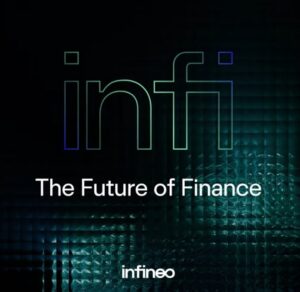
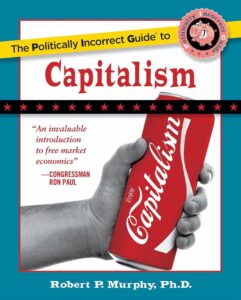
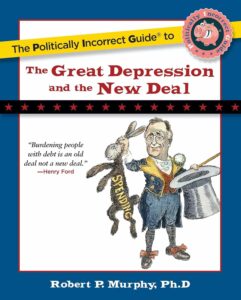
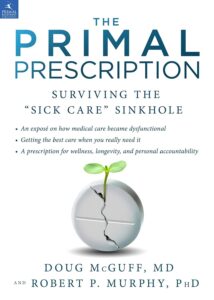
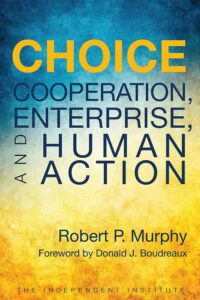
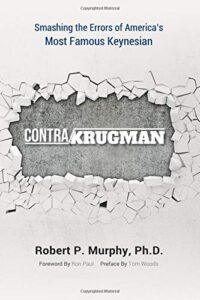
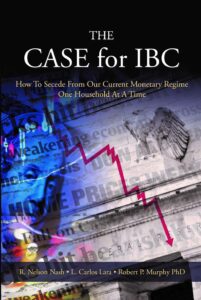
Recent Comments